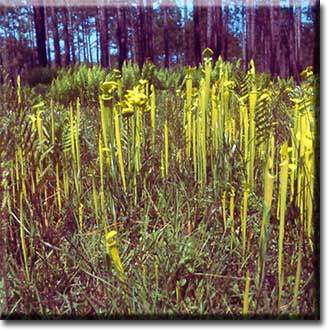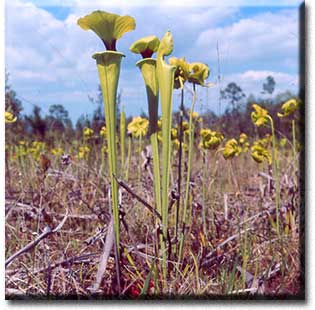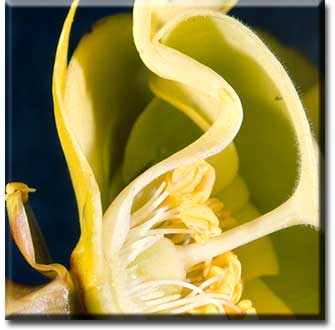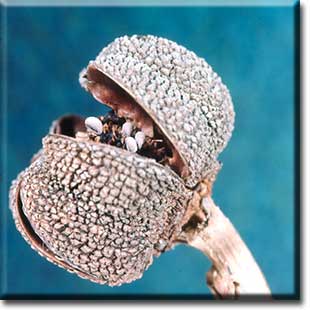Sarracenia flavaCarnivorous Plants / Insectivorous Plants
Sarracenia flava can grow in dense colonies, as here along low-lying areas near rives in South Carolina. It occurs on wet, sandy acid soil, and can be found in open areas of pine forests. Sarracenia flava is easy to recognize because of its tall yellow-green pitcher leaves.
The pitcher leaves of Sarracenia flava are taller than those of other Sarracenia species, frequently about 0.5 m in height. The flowers, which can be seen in this picture, are clear yellow, not unlike the yellowish color of the pitchers. The "neck" connecting the tubular part of the pitcher with the lid has prominently reddish or purplish veins in Sarracenia flava (below, left). Some have thought that the lids of pitchers in pitcher plants keep out rain, thus preventing the digestive fluid in the pitchers from being diluted. But certainly the lids play a major role in attracting an insect and guiding it down into the pitcher. The reddish veins play a part in this attraction and guidance. Here we see a leaf of Sarracenia flava (below, middle); the lid is beginning to unroll. When it does so, the lid will be flat rather than curled and arch over the pitcher. The flower, at right, is also in an unfolding stage. Sarracenia flava ranges from Virginia south to Alabama and Florida. It has even been found in New Jersey. 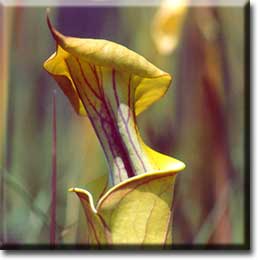 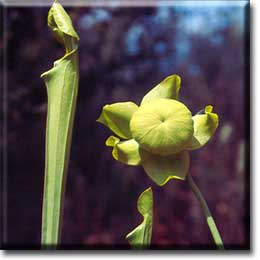 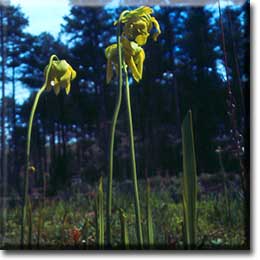
The flowers of Sarracenia flava at maturity mostly bend over to some degree (above, right). This may keep them from filling with rainwater. The petals are longer than the sepals, and hang down from the flowers.
Here's a flower of Sarracenia flava seen in a longitudinal section. The stigmatic surfaces that pick up pollen are on the umbrella shaped structure at right. In order to get into the flower, an insect must push between the petal (S-shaped in sectional view here) and the stigmatic umbrella. If it succeeds in doing so, it gets to the numerous pollen-rich stems (at the bottom of this picture). After pollination, a fruit develops. The fruit is dry and warty on the outer surface and splits open at maturity, revealing the grayish-brown seeds. In maturing, the fruit turns nearly vertically. The advantage in this change of position (compared to the bent over nature of the flower) is that the seeds will be less likely to fall out. With a fruit in a vertical position, the seeds are likely to fall out only nearby the plant. The fruit shakes in the wind. As it shakes, the seeds are more likely to be scattered farther rather than directly underneath the fruit. Thus, a higher proportion of the seeds are more likely to reach more distant localities. The Exyra moth lives in pitchers of Sarracenia flava. Here it's seen on the upper part of a pitcher. Exyra moths rarely leave the leaves of Sarracenia. That's not surprising, because their food is the Sarracenia leaves. A section down the pitcher reveals an adult Exyra nigrocaput moth in the narrow basal region of the pitcher. Just below the adult is a caterpillar of this moth species. At the bottom of the picture, the black items are remains of dead insects that have been caught by the pitcher and digested. 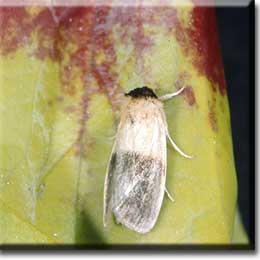 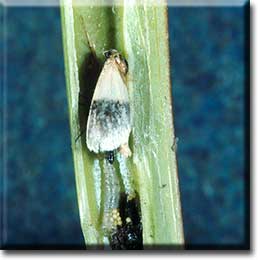 |
